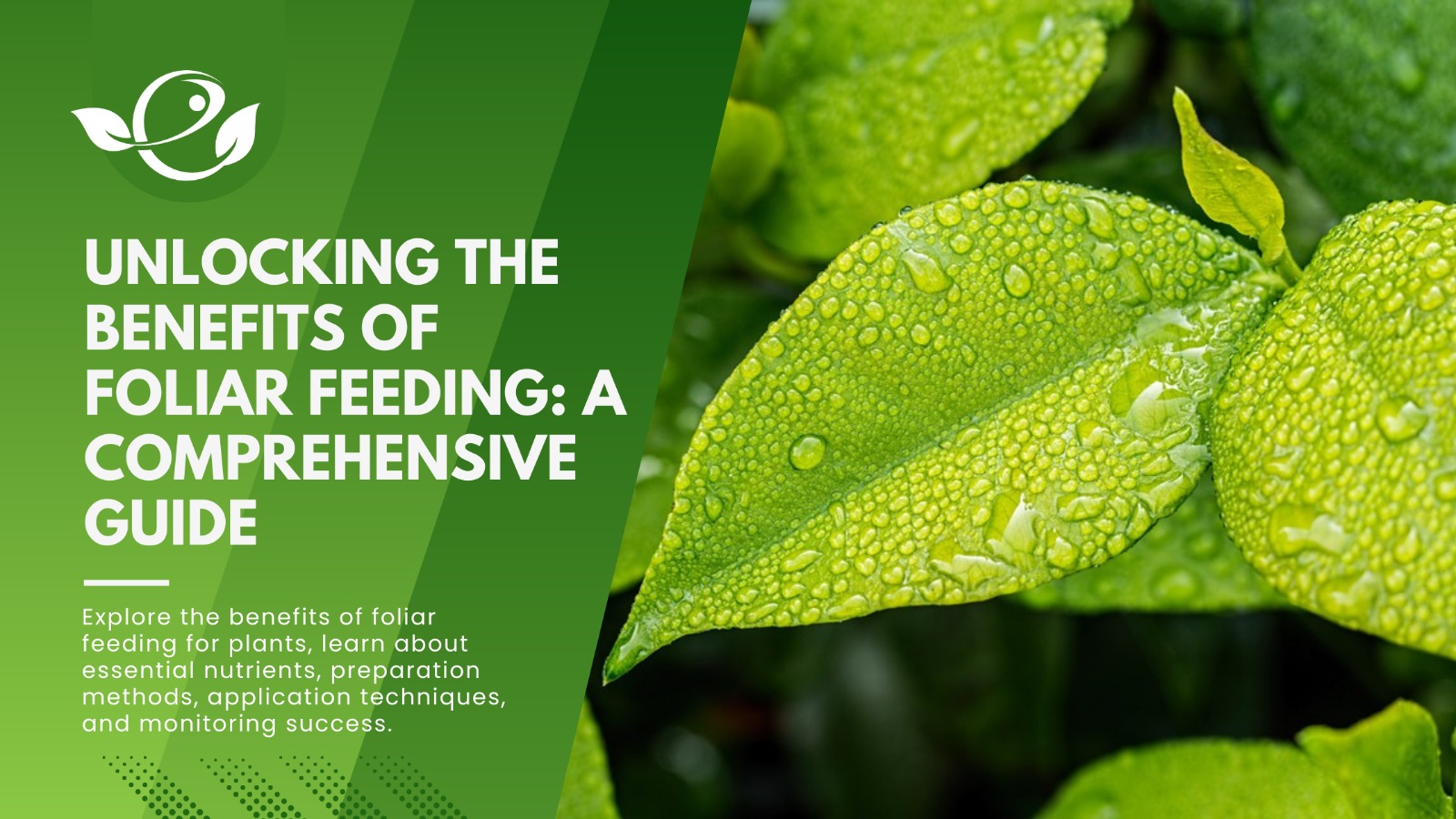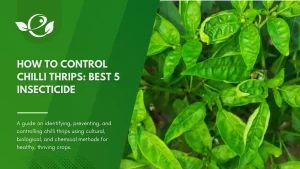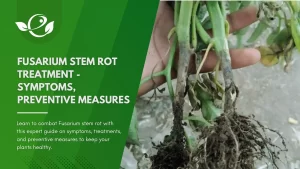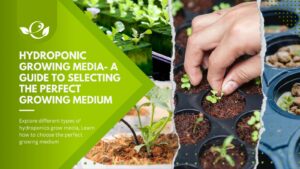Table of Contents
Plant nutrition is a crucial aspect of horticulture and agriculture, deeply impacting plant health, growth, and productivity. While soil or root-based fertilization is the conventional method, there’s another technique gaining increasing recognition – foliar feeding.
Foliar feeding involves applying nutrients directly to a plant’s leaves, which can absorb essential elements quickly and effectively. This method can be a game-changer for farmers, gardeners, and plant enthusiasts, enhancing plant health and growth while addressing nutrient deficiencies promptly. In this comprehensive guide, we will delve into the concept of foliar feeding, its benefits, the essential nutrients involved, and how to prepare and apply foliar sprays effectively.
Moreover, we’ll touch upon plants that benefit the most from foliar feeding and address common challenges that may come up. We will discuss monitoring and evaluation techniques for assessing the success of your foliar feeding program and look at how to incorporate foliar feeding into a holistic plant care approach. By the end of this guide, you’ll have a robust understanding of foliar feeding and how to employ it for healthier, happier plants.
Understanding Foliar Feeding
Foliar feeding can be described as a fast-acting and direct plant supplementation method. It enables essential nutrients to bypass the soil and root system entirely, targeting the leaf system instead.

Definition and Concept of Foliar Feeding
It is a practice where plants are fed by applying liquid fertilizer directly to their leaves. This concept is founded on the ability of plants to absorb nutrients not just through their roots but also through their leaves.
Mechanisms of Nutrient Absorption Through Leaves
Nutrient absorption during foliar feeding occurs primarily through the leaf’s stomata and cuticle. The stomata are small pores on the leaf surface used for gas exchange, while the cuticle is a waxy layer that covers the leaves. Here’s a more detailed look:
- Stomatal Absorption: A significant portion of the nutrients are absorbed through the stomata, especially water-soluble nutrients. They diffuse directly into the plant cells from the water droplets left on the leaves after a foliar application.
- Cuticular Absorption: The plant cuticle, though less permeable than stomata, can absorb nutrients too, particularly when they are in a lipid-soluble form.
Comparison of Foliar Feeding with Traditional Root-Based Fertilization
While both foliar feeding and root fertilization aim to provide plants with essential nutrients, the methods and results differ significantly:
- Speed of nutrient uptake: Foliar feeding results in faster nutrient uptake compared to root feeding, as nutrients don’t need to travel through the soil and root system.
- Efficiency: Since foliar feeding involves the direct application of nutrients, it’s often more efficient, reducing nutrient wastage.
- Environmental Impact: It can be more environmentally friendly, as it lessens the chances of nutrient runoff into nearby water bodies, a common issue with root fertilization.
Factors Affecting the Effectiveness of Foliar Feeding
Several factors can affect the efficacy of foliar feeding:
- Nutrient Formulation: The chemical form of the nutrient impacts its absorption. Certain forms are more readily absorbed through the leaf surface than others.
- Leaf Characteristics: Species with a higher stomata density and thinner cuticles tend to absorb nutrients more effectively.
- Environmental Conditions: Humidity, temperature, and light intensity can all influence stomatal opening and thus nutrient uptake.
- Timing of Application: The best times to apply foliar feed are early morning and late evening when stomata are most likely to be open.
Advantages of Foliar Feeding
It is not just an alternative but a complementary solution to traditional soil application methods. It provides unique benefits that can significantly improve plant health and growth.
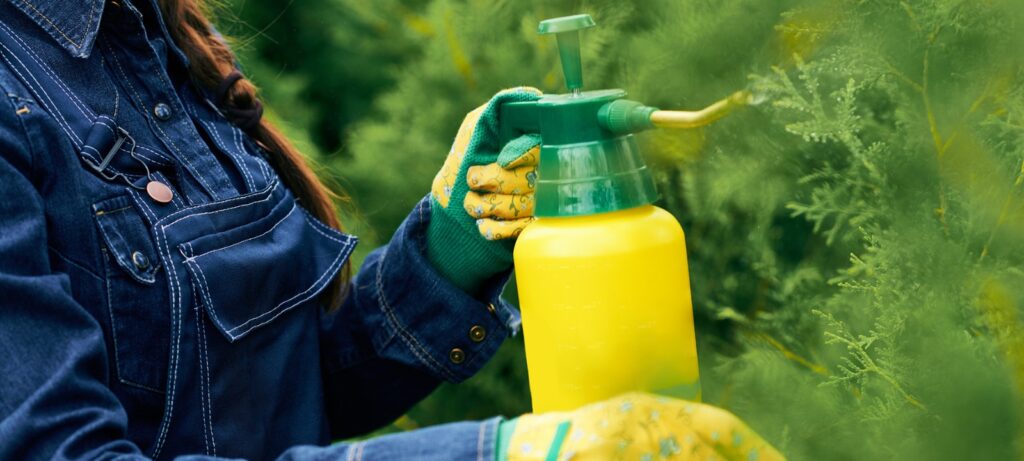
Rapid Nutrient Uptake and Response
It allows plants to absorb nutrients more quickly than soil-based feeding methods. This rapid uptake can lead to visible improvements in plant health and vitality within a few days of application.
Improved Nutrient Efficiency and Reduced Wastage
The direct application of nutrients to the leaves reduces wastage that usually occurs due to leaching or chemical interactions in the soil. As a result, foliar feeding often uses less fertilizer to achieve the same results as soil-based feeding methods.
Addressing Nutrient Deficiencies Quickly
Foliar sprays are an effective way to quickly rectify nutrient deficiencies. They are particularly useful when a fast response is required, such as during a critical growth stage or when signs of deficiency appear suddenly.
Enhancing Plant Growth and Development
Promotes Faster Growth: By providing nutrients directly, It can promote faster and healthier growth in plants.
- Improves Yield Quality: Nutrient availability at crucial growth stages can enhance the quality of the yield in terms of size, taste, and nutritional value.
- Boosts Resistance: Adequate nutrient supply can increase a plant’s resistance to diseases and pests.
Overcoming Nutrient Uptake Limitations in Soils
Foliar feeding can overcome several soil-based limitations:
- Poor Soil Conditions: In cases where the soil is too sandy, compacted, or waterlogged, foliar feeding can ensure plants receive the necessary nutrients.
- pH Imbalances: Nutrient availability in the soil can be affected by pH levels. Foliar feeding bypasses this issue by delivering nutrients directly to the leaves.
- Cold Temperatures: In colder months, nutrient uptake through roots can be slow. Foliar feeding provides a practical solution to this problem.
- Nutrient Antagonism: Certain nutrients in the soil can inhibit the absorption of others. With foliar feeding, these antagonistic interactions can be avoided.
Essential Nutrients for Foliar Feeding
When it comes to foliar feeding, selecting the right nutrients is crucial for optimal plant health. Plants require a range of macro and micronutrients, each of which plays a unique role in plant development.
Macro-nutrients
These are nutrients that plants require in larger amounts.
- Nitrogen (N): Essential for leaf and stem growth, nitrogen is a key component of amino acids, proteins, and chlorophyll.
- Phosphorus (P): Crucial for energy transfer and storage, phosphorus also plays a role in photosynthesis, respiration, and cell division.
- Potassium (K): This nutrient helps with protein synthesis, improves disease resistance, and regulates water usage in plants.
- Calcium (Ca): Calcium is vital for cell wall development and growth. It also helps in the normal functioning of plant metabolic processes.
- Magnesium (Mg): Magnesium is a crucial component of chlorophyll and is involved in several enzyme reactions.
- Sulphur (S): Essential for certain amino acids and proteins, sulfur also plays a role in the formation of oils and flavors in plants.
Micro-nutrients
These are nutrients required by plants in smaller quantities, but they are still crucial for overall plant health.
- Iron (Fe): Iron is necessary for chlorophyll synthesis and functions as a catalyst for biochemical reactions in plants.
- Zinc (Zn): Zinc is involved in enzyme activation and is necessary for protein synthesis.
- Manganese (Mn): Manganese is essential for photosynthesis, and it also assists in the activation of enzymes.
- Boron (B): Boron is crucial for cell division, protein formation, and pollination.
Vitamins, Amino Acids, and Other Beneficial Compounds
In addition to macro and micronutrients, plants can benefit from other compounds when included in foliar sprays:
- Vitamins: such as B1, C and E can help improve plant health and stress resistance.
- Amino Acids: These are the building blocks of proteins, and can aid in growth and development.
- Growth Hormones: Compounds like gibberellins, auxins, and cytokinins can stimulate various growth processes within plants.
Preparing and Applying Foliar Sprays
Applying foliar sprays involves more than just spraying a solution on your plants. From choosing the right nutrients to applying them correctly, each step is crucial to achieving the desired results.
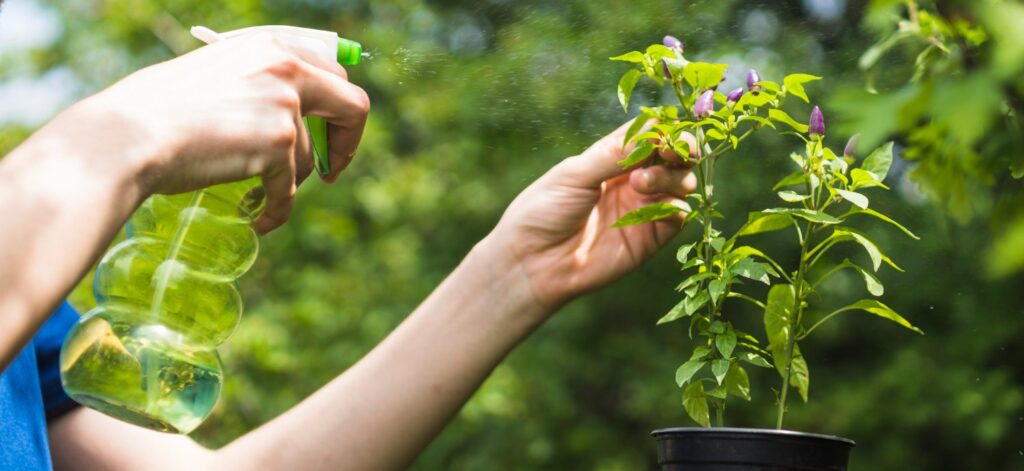
Selecting the Right Nutrients and Formulations
Selecting the right nutrients involves identifying what your plants need most at any given time. This will often depend on the plant type, growth stage, and any visible signs of deficiency.
Understanding the Appropriate Concentrations
The concentration of your foliar spray is important. Too much can harm your plants, while too little may not provide the necessary nutrients. Always follow product instructions and consider doing a small-scale test before applying it to all plants.
Factors Affecting Application Timing
The timing of your foliar spray application can affect its effectiveness. Several factors can influence this:
- Plant Growth Stage: Certain stages of plant growth may require more of certain nutrients.
- Weather Conditions: Avoid spraying during the hot midday sun, as this can cause leaf burn. Also, windy conditions may cause spray drift.
- Plant Condition: If plants are stressed due to drought or disease, it may be best to address these issues before applying a foliar spray.
Techniques for Proper Application
- Spray Equipment and Settings: Use a fine spray nozzle to ensure maximum leaf coverage. Adjust your sprayer settings to avoid excessive runoff or poor coverage.
- Adjuvants and Their Role: Adjuvants are substances that can improve the effectiveness of foliar sprays. They can improve spray coverage, nutrient absorption, or the stability of the spray solution.
Remember, the key to effective foliar feeding lies in the even application of the spray. The underside of leaves should not be neglected as these areas often contain many stomata where nutrients can be absorbed.
Plants that Benefit from Foliar Feeding
While all plants can absorb nutrients through their leaves, some are particularly responsive to foliar feeding. Let’s explore some of these plants and the reasons behind their receptiveness.
Crops and Vegetables

Most commercial crops and vegetables can benefit greatly from foliar feeding. This method is especially useful during critical growth stages, such as flowering and fruit development.
- Corn: Corn can benefit from foliar application of nitrogen, particularly during the pre-tassel stage.
- Tomatoes: Foliar application of calcium can prevent blossom-end rot, a common problem in tomatoes.
- Potatoes: Potatoes can benefit from foliar application of magnesium, which is vital for photosynthesis.
Ornamental Plants

Ornamental plants often have specific nutritional needs, which can be efficiently met through foliar feeding.
- Roses: Roses, for instance, may benefit from extra magnesium to enhance their vibrant colours.
- Azaleas and Rhododendrons: These plants often thrive in acidic soils, and foliar feeding can be a useful way to provide necessary nutrients that are otherwise unavailable in such pH conditions.
Indoor and Container Plants

Indoor and container plants are frequently subject to less-than-ideal soil conditions. It can ensure they receive the necessary nutrients.
- Succulents and Cacti: Given their minimal water needs, these plants often respond well to foliar feeding as a way to prevent overwatering.
- Orchids: Many orchids have unique nutritional requirements, which can be efficiently addressed through foliar feeding.
Specific Examples and Success Stories
- Apple Trees: Apple growers have reported improved resistance to diseases and better fruit quality when employing foliar feeding techniques.
- Wheat: Some wheat farmers have reported higher yields and improved grain quality with the strategic use of foliar sprays.
Common Challenges and Pitfalls
Despite its many benefits, it can present certain challenges and pitfalls. By identifying these potential issues, growers can take measures to avoid them.
Risk of Nutrient Overdose and Phytotoxicity
Excessive application of nutrients can lead to an overdose, causing nutrient toxicity. Symptoms often include leaf burn or discoloration. To mitigate this risk:
- Always follow product instructions for concentration and application rates.
- Test the spray on a small area before applying it to the entire plant.
Environmental Factors Affecting Spray Efficacy
Certain environmental conditions can reduce the effectiveness of foliar sprays:
- Temperature: Extreme temperatures can cause stomata to close, reducing nutrient absorption.
- Humidity: High humidity can slow down evaporation, leading to dilution of the nutrient solution on the leaf surface and potentially less absorption.
Incompatibility with Certain Pesticides
Some nutrients may not be compatible with certain pesticides, potentially reducing effectiveness or causing plant damage. Always check compatibility before combining products in a foliar spray.
Strategies to Avoid and Mitigate Issues
Avoiding common issues with foliar feeding involves careful planning, observation, and adjustment:
- Proper Timing: Apply foliar sprays during cooler parts of the day when stomata are more likely to be open.
- Correct Concentration: Always follow recommended concentrations to avoid nutrient toxicity.
- Regular Monitoring: Keep a close eye on plants for any signs of nutrient overdose or deficiency. Regular tissue testing can help identify nutrient imbalances early.
- Compatibility Check: Ensure all components of your foliar spray are compatible to avoid adverse reactions.
Monitoring and Evaluating Foliar Feeding Success
Keeping track of your plant’s response to foliar feeding is crucial to ensure you’re meeting their nutritional needs effectively. Here’s how you can evaluate the success of your foliar feeding program.
Identifying Nutrient Deficiency Symptoms
One of the first steps in monitoring is recognizing signs of nutrient deficiencies:
- Nitrogen: Plants lacking nitrogen may show yellowing of older leaves.
- Phosphorus: A deficiency can cause leaves to turn a dark green or purplish color.
- Potassium: Symptoms include yellowing or browning at leaf edges.
Regularly check your plants for these and other symptoms to adjust your feeding as necessary.
Measuring Plant Growth and Response
Monitor your plants’ growth rate, color, and overall health. Faster growth, greener leaves, and improved resistance to stressors often indicate a successful foliar feeding program.
Soil Testing and Tissue Analysis
Scientific testing can provide a more precise picture of your plant’s health:
- Soil Testing: A soil test can reveal the availability of nutrients at the root level and help identify any deficiencies or imbalances.
- Tissue Analysis: This involves testing plant tissues to measure the nutrients they’ve absorbed. It can help verify if your foliar feeding program is providing the necessary nutrients.
Adjusting Foliar Feeding Programs for Optimization
Based on your monitoring and evaluation, you might need to adjust your foliar feeding program. This could mean changing nutrient formulations, concentrations, or application times to better suit your plants’ needs.
Integrating Foliar Feeding into a Holistic Plant Care Approach
Foliar feeding is not a stand-alone solution for plant nutrition but rather a tool to complement other aspects of plant care. Here’s how you can incorporate it into a well-rounded plant nutrition plan.
Combining Foliar Feeding with Root Fertilization
Root fertilization should form the backbone of your plant nutrition plan, with foliar feeding used to supplement this:
- Use foliar sprays to quickly address nutrient deficiencies or provide a boost during critical growth stages.
- Continue to provide balanced nutrition through root fertilization to maintain long-term health and productivity.
Using Organic and Sustainable Foliar Sprays
Consider using organic and eco-friendly nutrients in your foliar sprays:
- Many organic compounds, such as seaweed extracts or compost teas, can be effective foliar fertilizers.
- Using such products can reduce the environmental impact of your gardening or farming practices.
Implementing a Well-Rounded Plant Nutrition Plan
A well-rounded nutrition plan takes into account all of a plant’s needs:
- Ensure your plants are receiving all essential nutrients, whether from the soil or foliar sprays.
- Regularly test your soil and plant tissues to identify any nutrient imbalances or deficiencies.
- Adjust your nutrition plan as necessary, based on plant responses and testing results.
Remember, the goal of foliar feeding, like all aspects of plant care, is to create the healthiest possible environment for your plants to thrive.
Conclusion
Throughout this guide, we have explored the benefits and intricacies of foliar feeding. We have unlocked the potential of this method to boost plant growth and development, improve nutrient efficiency, and rapidly address nutrient deficiencies. As a complement to traditional root feeding, foliar feeding serves as an invaluable tool in any plant care regimen.
Remember, the successful integration of foliar feeding into your plant care approach requires understanding the needs of your plants, the nutrients involved, and the proper application and monitoring techniques. By keeping a close eye on your plants’ health and adjusting your foliar feeding program as necessary, you can truly unlock the benefits of this technique.
We hope this guide inspires you to experiment with foliar feeding and observe the remarkable benefits it can offer your plants. Here’s to healthier, more vibrant plants and a greener, more fruitful garden!
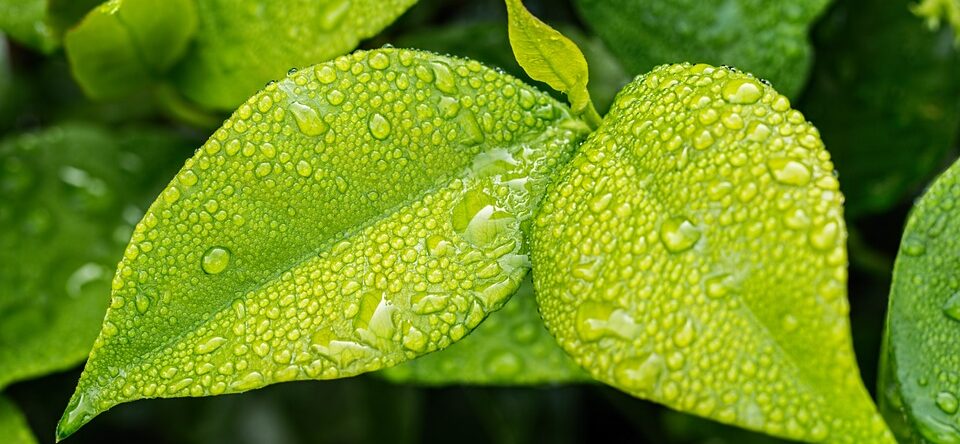
Frequently Asked Questions about Foliar Feeding
As you embark on your foliar feeding journey, you might encounter a few questions. Here, we provide expert insights and answers to some common queries not covered in the previous sections.
1. Can I use any fertilizer for foliar feeding?
Not all fertilizers are suitable for foliar feeding. Always use a fertilizer labeled for foliar use as they are formulated to be easily absorbed by leaves and are generally safer to prevent leaf burn.
2. How often should I use foliar sprays?
The frequency of foliar feeding depends on the type of plants and their nutritional needs. As a rule of thumb, foliar feeding every 2-4 weeks can be beneficial. However, it’s crucial to monitor plants for any signs of nutrient deficiency or toxicity and adjust the frequency accordingly.
3. Is it possible to burn or damage my plants with foliar sprays?
Yes, it is possible to damage plant leaves if the concentration of nutrients in your spray is too high, or if you apply the spray under intense sunlight. Always follow the recommended dosage and apply sprays during cooler parts of the day, typically early morning or late evening.
4. What’s the best time to apply foliar sprays?
The best time to apply foliar sprays is in the early morning or late evening when the stomata (small openings on leaf surfaces) are open and when the sun won’t cause the spray to evaporate too quickly.
5. Can I combine foliar feeding with pest control sprays?
Some foliar sprays can be mixed with pest control sprays, but it largely depends on the specific products being used. Always check the product labels for compatibility information, or test a small area first to ensure there’s no adverse reaction.
6. Does foliar feeding replace the need for soil fertilization?
No, foliar feeding does not replace the need for soil fertilization. It should be used as a supplement to a comprehensive soil-based fertilization program, especially when a quick response is needed, or when nutrient uptake from the soil is insufficient.
7. Can I use foliar feeding for any plant type?
While all plants have the capacity to absorb nutrients through their leaves, some may respond better than others to foliar feeding. It can be especially beneficial for plants in stressful conditions, such as high heat or drought, during periods of rapid growth, or when soil conditions hinder nutrient uptake.
